6. BioFabricating Materials¶
This week I experimenting creating bioplastics and bioleathers.
What does it means biomaterial?
- Biobased (organic in the nature)
- Biodegradable (not natural ones)
- Biocompostable (eatable by miocrobes,less impact, full assorbly by the environment)

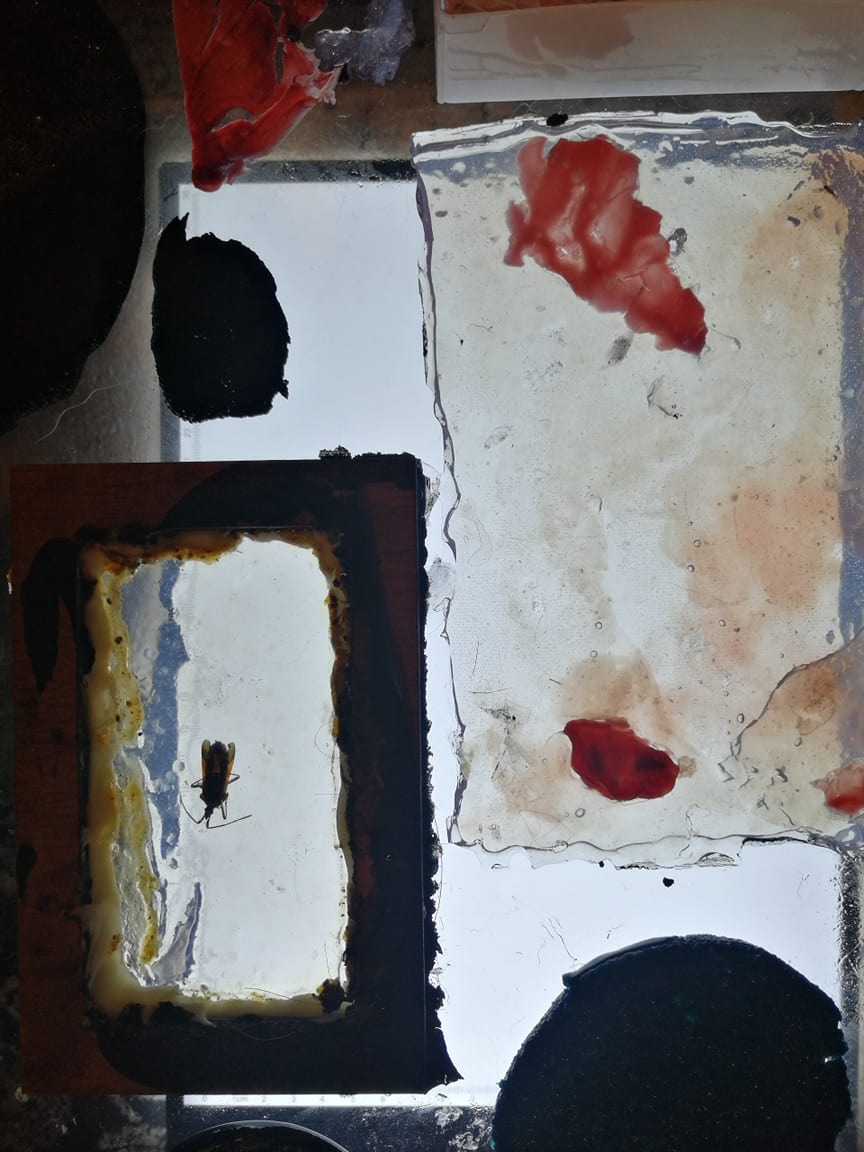
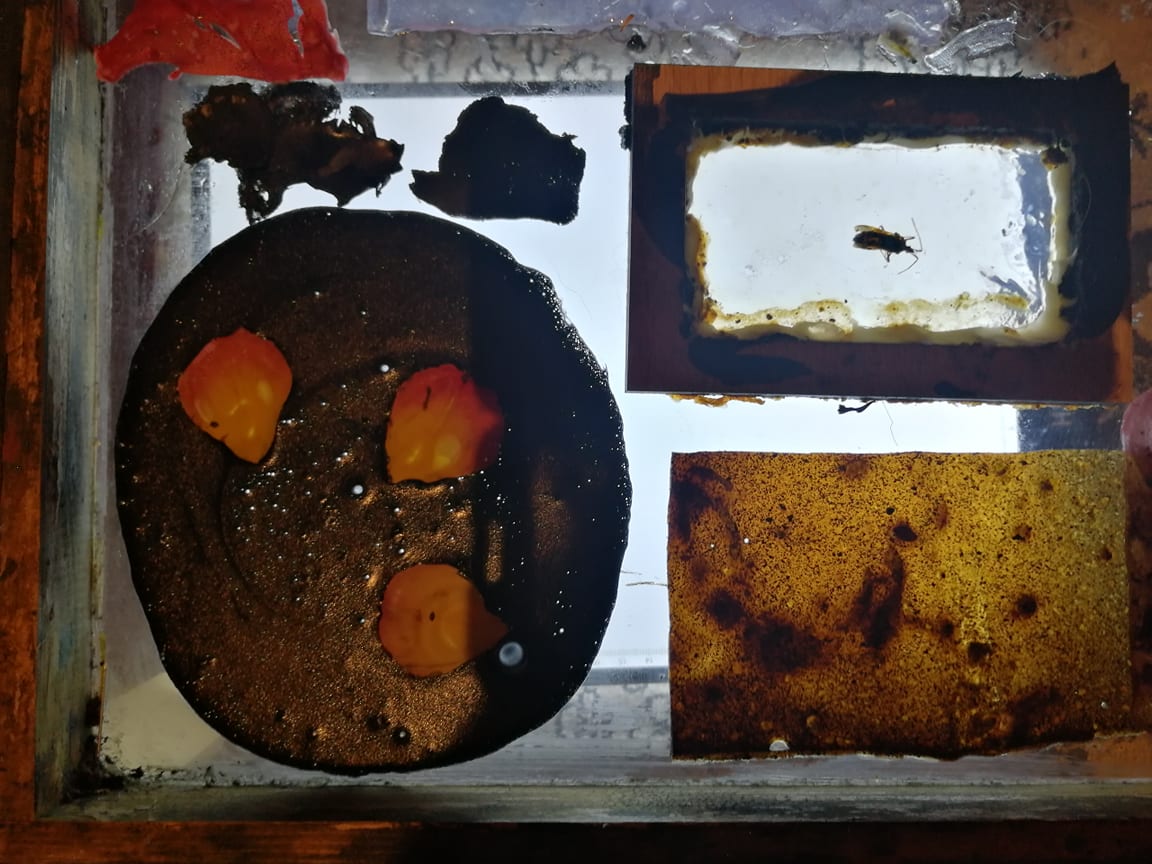
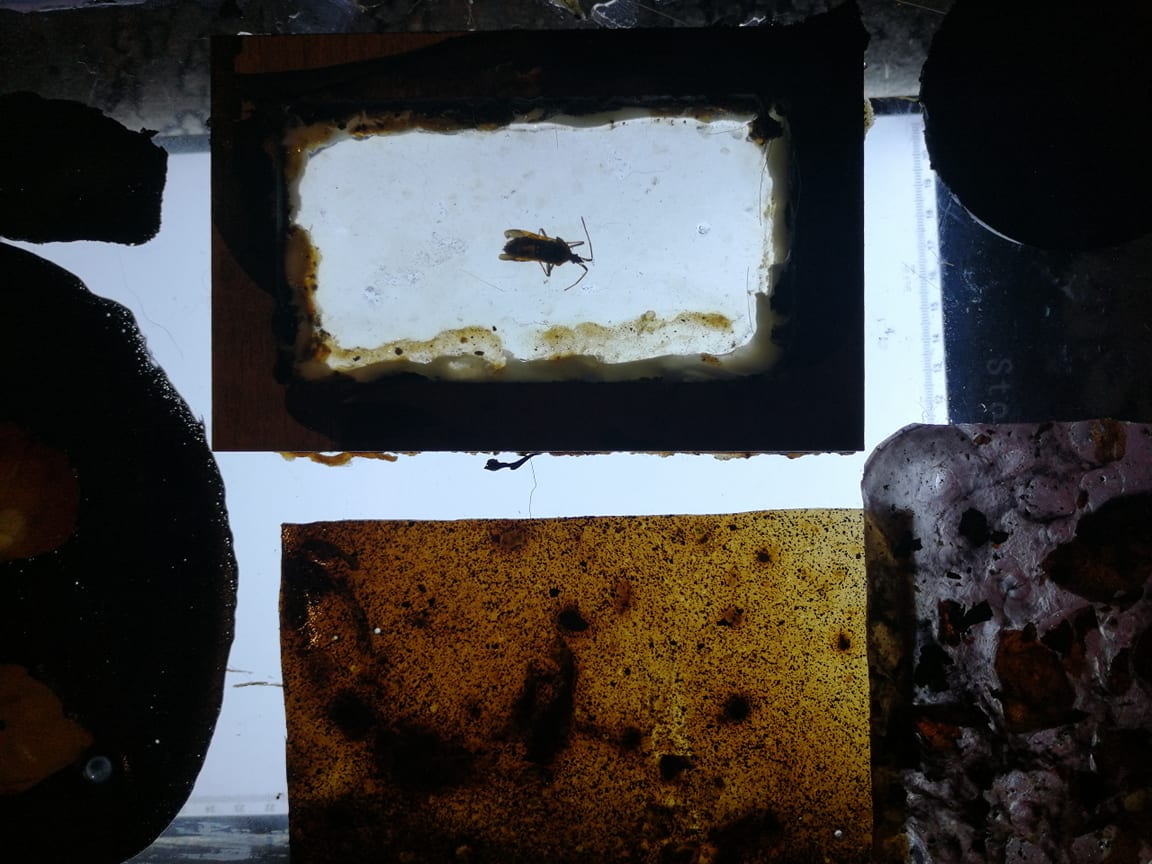
-
Bioplastic are renewable resources, you can replace high pollution products, you can use them like 3d filament. They are Compostable, it means that can it decompose only on certain conditions. Bioplastics follow the same process of plastic making, . You need a Polymer (Algae, Alginate, Gelatine, Starch..) . a Plasticizer (glycerin) . a Stiffening (Fibers, Natural debri) . Expanding (greensoap, emulsifiers) . Color (natural pigments, ink) We need to think of the material in all stages: Production, Application, Use, Reuse, Repair, End of Life -- RECYCLE Gelatine even if is animal based is reusable and reshapable.
-
Biodegradable Plastic Home compostable (wheat bran, coffee, orange peels) . Grown collagen instead of the Gelatine.
For colors can be used: Aromatic fabric, cacao, mika powder, hibiscus and vinagre(useful against moulds, paper and starch, charcoal and fibers)
For additive: Orange peels, eggshell, avocado
Preparation & tools¶
Tools:
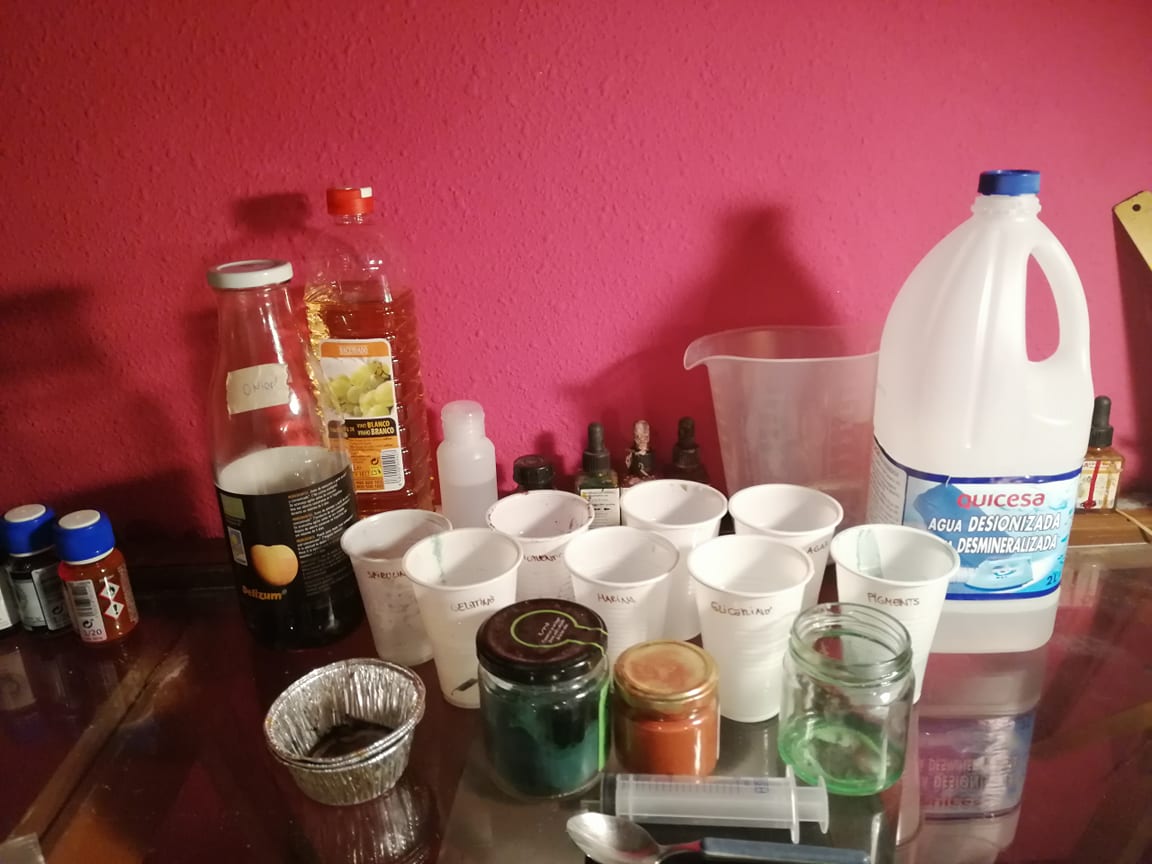
Ingredients:
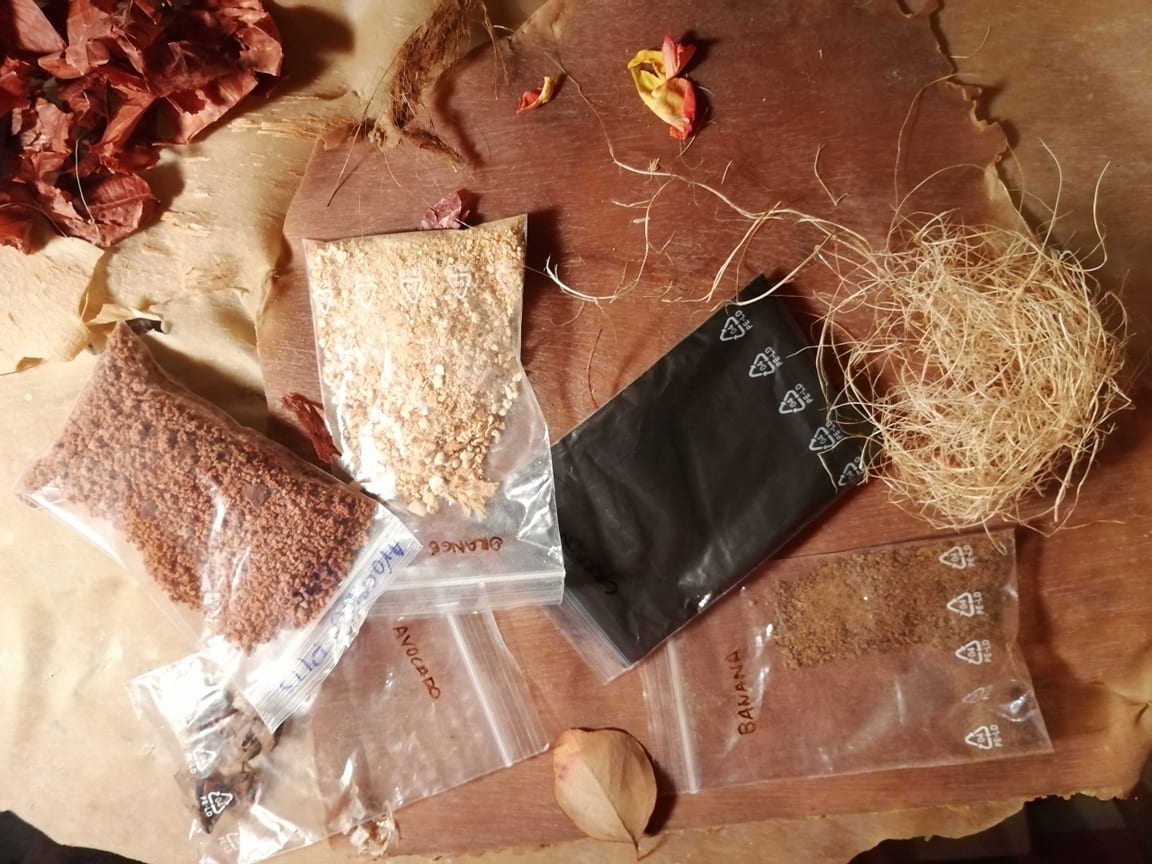
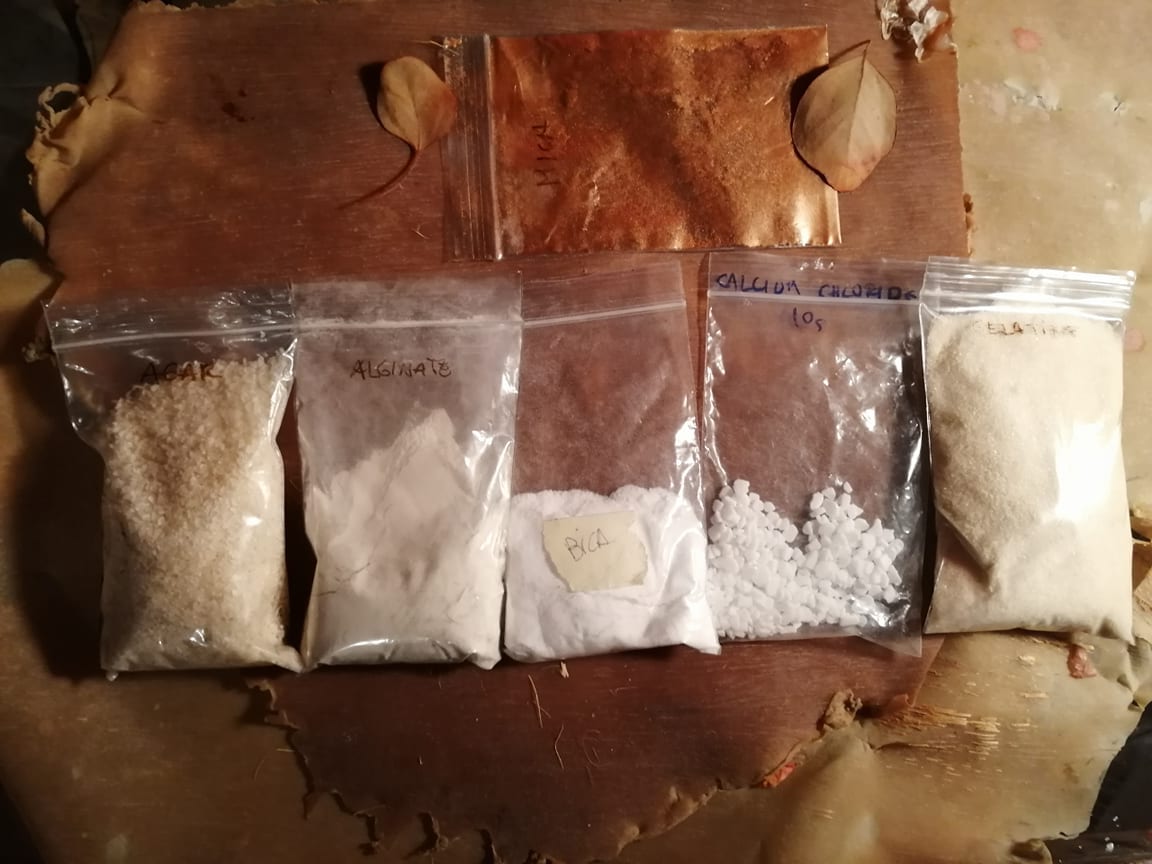
Gelatine (you dry in vertical) Agar (in the oven)
CRAFT MATERIALS¶
SODIUM ALGINATE¶
Water 525ml Alginate 14gr Glycerin 42g CLoruro 30g +Pigments +Flowers If you add oil to any of your receipe will mantain the liquid.
- Mix the Alginate in the pot
- Add fibers or pigments and Glycerin
- Rest for few hours to let the bubble disappear
- Spray the surface with Cloruro (30g Cloruro x 100ml Water)
- Add the Alginate mix
- Spray again and press, and rest
- Wash it


Glycerine: Makes the composite elastic or stretch Sunflower: make it more white Cloruro: Is the cure to make the alginate harder
GELATINE¶
Water 75ml Gelatine 15gr Glycerin 7g + coffee waste + Avocado pits

Boil the Water, add the gelatine, stir it, then add the glycerin and the pigments, and continue stir it for 10 min and put into the mold.
AGAR¶
Water 100ml Agar 1gr Glycerin 1,5gr + Seashell + Fibers
Mix the Agar with the water and boil it, stir it til is not dissoved, then add the glycerin and the pigments, and continue stir it for 10 min and put into the mold.

Bio Resin Recipe¶
127g Pine Resin 127g Ethilic Alcohol + Tea and Mica Pigments
Put the pine resin inside the pot, heating up and wait till the resin start to melt, don't mix it When the Resin is liquid add the alcol and the pigments. Mold it and wait to dry.

Biomaterial recipes¶
GELATINE BASED
Water 100ml
Gelatine 20gr
Glycerin 1gr
Spirulina 3g
+ Hemp fibers + palm tree

STARCH BASED
Water 16gr
Tapioca 16gr
Vinegar 1,6gr
Wholewheat flour 50gr
+ Flowers

ALGINATE BASED
Water 525ml
Alginate 14gr
Glycerin 42g
CLoruro 30g
+Pigments +Flowers

GELATINE BASED
Water 75ml
Gelatine 15gr
Glycerin 7g
+ coffee waste + Avocado pits

AGAR FOAM
Agar 1.6gr
Glycerin 2.7gr
Water 40ml
Soap 4gr
+Charcoal + avocado pits

AGAR BASED
Water 100ml
Agar 1gr
Glycerin 1,5gr
+ Seashell + Fibers

AGAR BASED
Water 100ml
Gelatine 4.8gr
Agar 1gr
Glycerin 1,5gr
+Banana peels powder

AGAR BASED
Water 100ml
Gelatine 4.8gr
Agar 1gr
Glycerin 1,5gr
+Banana peels powder +palm tree

GELATINE BASED
Water 100ml
Charcoal 16gr
Gelatine 26gr
Glycerin 10g

AGAR FOAM
Water 40gr
Glycerin 2.7gr
Agar 1.6gr
Soap 6gr

ALGINATE BASED
Water 525ml
Alginate 14gr
Glycerin 42g
CLoruro 30g
+Pigments +Flowers

Bio FOAM
Water 100gr
Glycerin 5gr
Gelatine 20gr
Soap 4gr
+Blue ink

CONDUCTIVE AGAR
Agar 2gr
Glyc 1ml
Water 210ml
Salt 5gr
+wine for the color
+flowers

GELATINE PAPER
60ml water
Gelatine 12gr
Glycerin 14ml
+ recycled paper + mika pigment +onino skin

GROWN MATERIALS¶
Kombucha Leather Recipe¶
Fermented tea, or tea fungus. Recipe for 5l water:
- 5l water
- 10 teabags
- c. 600g sugar
- 1 Kombucha Scoby
- Vinegar (until the Ph turns 2.5-3.5)
- clean container
- natural dyes or food dyes
- Ethanol 96%
-
Gloves
-
Boil tea with sugar and let it cool down
- Disinfect the containers
- Control the PH and add vinegar until the Ph turns 2.5-3.5 (In this case, we added about 500ml)
- Add Scoby

Mycelium¶
vegetative part of a fungus or fungus-like bacterial colony Use with mycelium: - hemp fibers, hemp compressed fibers, iuta, allowing to circulate air. -Rise processed and mixed with other fibers. - different materials from agriculture waste 1.Sterilize everything 2.Put into a mold to let it colonize for 2 weeks. Smooth surface and plastic over the mold. 3.Wrap it with plastic and make breathy holes. 4.24-25° incubator Different mycelium has different properties. 5.In 3-4 days remove it from the mold 6.Put upside down protecting with plastic without touching it 6.When is white inside you leave it solidifying on the sun.
